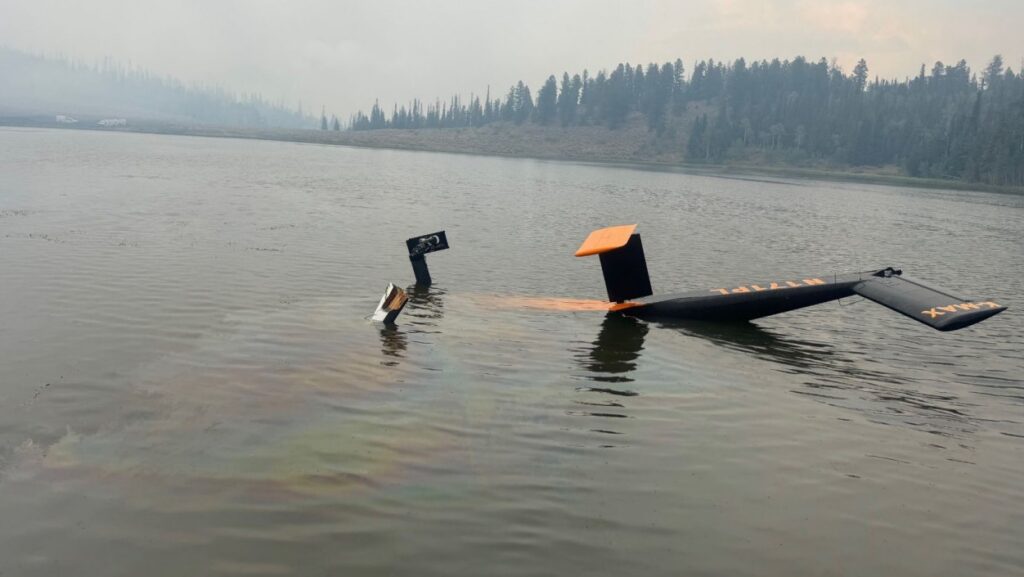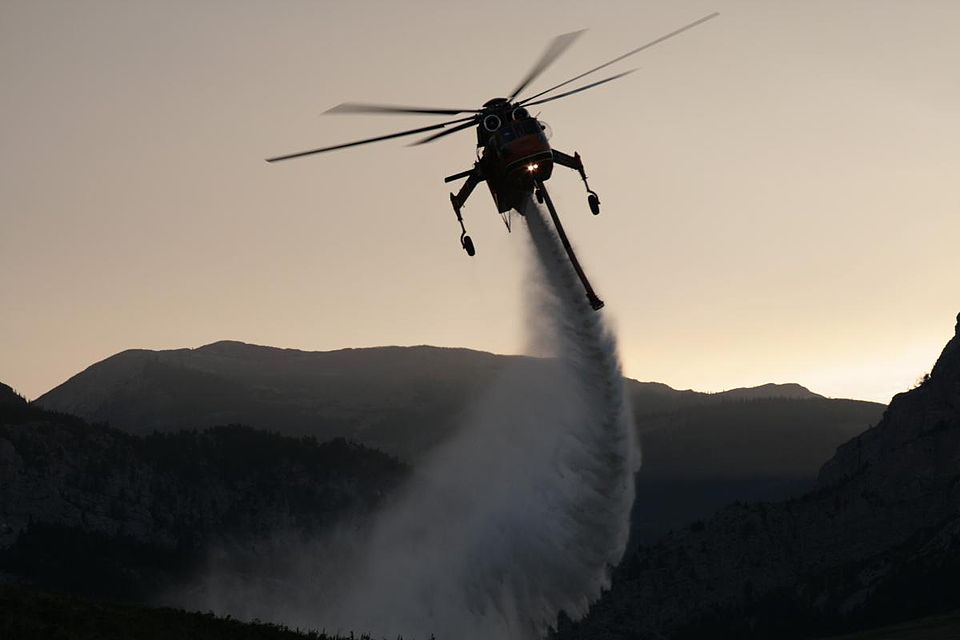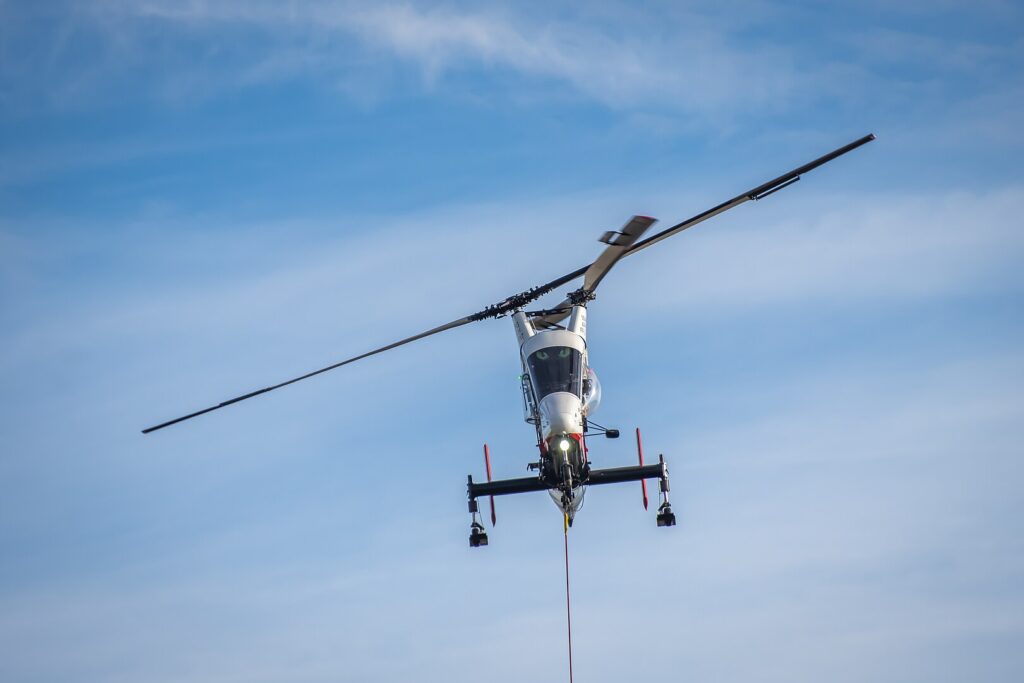Firefighting Kaman K-Max Water Impact After A Close Pass by a Sikorsky S-64 Skycrane (Precision Lift N171PL)
On 22 August 2025 Kaman K-1200 K-Max N171PL of Precision Lift LLC impacted a lake near Eagle, Colorado while refilling an underslung firefighting bucket with water. The US National Transportation Safety Board (NTSB) published a rapid brief, final safety investigation report on 17 October 2025.

Precision Lift Kaman K-1200 K-Max N171PL Submerged in Lake After Water Impact (Credit:: FAA via NTSB)
The K-Max pilot had:
26091 hours (Total, all aircraft), 1445 hours (Total, this make and model)
The pilot stated that (our emphasis added)…
…there had been wind gusts throughout the day and a right quartering tailwind of approximately 15 kts was present when he was refilling the bucket.
When…
…another helicopter flew by his helicopter about 50-100 yds right and 150 ft above his position, he felt a push to the left.
While not mentioned in the NTSB report, the accident report form reveals this was a much larger 19 t Erickson S-64 Skycrane.

S-64 Skycrane (Credit: US Forest Service)
The NTSB remarkably does not comment on this loss of separation and the downwash risk. The K-Max pilot…
…pulled back on the cyclic control, but he could not recover the helicopter, which continued pitching to the left.
The K-Max descended and impacted the lake and “sustained substantial [damage] to the main rotor blades”. The pilot was able to egress the aircraft and swan to the bank, where the Helico (Helicopter Coordinator) landed and flew him to hospital for a check-up.
The pilot stated there was no prior aircraft malfunction or failure.
NTSB determined the probable cause to be a rather simplistic and unhelpful:
The pilot’s failure to maintain helicopter control which resulted in an uncontrolled descent and impact with terrain.
The NTSB make no formal safety recommendations nor do they highlight any safety messages.
In contrast the pilot made the following recommendation in the accident report form:
More separation of rotorcraft. I had been working one part of the fire and dipping out of this pond. The sky cranes had been working another section of the fire until they got smoked out. Air attack moved them over to the side I had been working. When the sky crane flew by it caused a downwind vortice [sic – vortex] which I could not recover from.
A thorough investigation would have considered the coordination of firefighting aircraft and sought statements from other stakeholders.

Kaman K-MAX in Europe (Credit: Pjt56 CC BY 4.0)
Safety Resources
The European Safety Promotion Network Rotorcraft (ESPN-R) has a helicopter safety discussion group on LinkedIn.
You may also find these Aerossurance articles of interest:
Limitations of See and Avoid: Four Die in HEMS Helicopter / PA-28 Mid Air Collision
Alpine MAC ANSV Report: Ascending AS350B3 and Descending Jodel D.140E Collided Over Glacier
Mid-Air Collision of Guimbal Cabri G2 9M-HCA & 9M-HCB: Malaysian AAIB Preliminary Report
AAIB Highlight Electronic Conspicuity and the Limitations of See and Avoid after Mid Air Collision
Military Mid Air Collisions
Fatal Biplane/Helicopter Mid Air Collision in Spain, 30 December 2017
A319 / Cougar Airprox at MRS: ATC Busy, Failed Transponder and Helicopter Filtered From Radar
Mid Air Collision Typhoon & Learjet 35
UK CAA HOFO ACAS Rulemaking 2025 & a 2004 Tornado / AS332L Airprox
Firefighting Bucket Snags Trees During Autorotation
Helicopter Tail Rotor Strike from Firefighting Bucket
Crew Confusion in Firefighting 737 Terrain Impact

Recent Comments